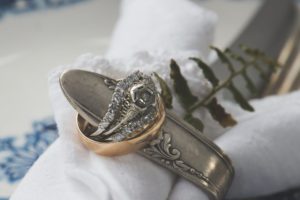 10k, 14k, 18k, or 24k are valuable gold jewelry but what is their difference from one another? The karat of gold is what determines the purity level of your gold jewelry. So, keep reading as I take you to a closer look at what this means for your jewelry and I tell you the ways on how to determine the best karat weight for your needs.
10k, 14k, 18k, or 24k are valuable gold jewelry but what is their difference from one another? The karat of gold is what determines the purity level of your gold jewelry. So, keep reading as I take you to a closer look at what this means for your jewelry and I tell you the ways on how to determine the best karat weight for your needs.
Why Is Gold Jewelry So Popular
Gold has been naturally charming for thousands of years already. It became a measurement of authority and wealth since the origin of civilization and people are intuitively drawn to it. Historically, gold jewelry was a useful means of both showcasing your wealth and carrying your accumulated wealth with you for handy use in times of need. The human psyche can never underestimate the symbolic importance of gold.
What is Gold
Pure gold, or the symbol AU on the periodic table, is metallic yellow. Gold is a very flexible and soft metal compared with other elements. Other various metals can share the look of pure gold, pyrite for example, traditionally known as fool’s gold, but there is no replacement for 14k gold.
Gold Purity and The Karat System
Gold is a very stable metal where it stands the test of time. It is not known to rust, fade, or even diminish. Being of the softer metals, gold is easy to work with and ideal for shaping into exquisite jewelry pieces. When working with gold, as soft as it is, jewelers will often mix additional alloys with gold to strengthen it and increase its durability. Typically, the alloys are a combination of zinc, nickel, silver, and copper. This also affects gold coins among which the “krugerrand” – also deeply loved by your diamond teacher – no doubt is the most famous one.
The addition of these alloy metal mixture does affect the final color of the gold. Perhaps, you have seen engagement ring sets that use yellow gold bands, white gold, or other gold colors. They are created by modifying the ratio of the mixed alloys with pure gold.
The karat weight determines the purity of your gold. It is a measure of purity that is measured from 1 to 24. So, if you think of it, a 1K gold would be the strongest wit lesser pure gold, and a 24k gold would be pure gold.
What is the Ideal Karat Gold
So when you want to determine a piece of gold jewelry that you plan to buy, you should consider the karat of the gold as an indicator of its purity and durability. For example, a 10K ring will contain 10 parts per 24 of gold which will be durable for its additional alloy weight. However, it will represent a lower value from the perspective of pure gold. An 18K jewelry will give additional jewelry value significance that is typical for diamond engagement rings or diamond wedding rings while still maintaining some of the strength benefits needed for ring durability.
14K rings and gold bands are the most well-known used today. They represent a compromise between color, durability, and value. A 14K gold engagement ring has 14 karats alloy mixed with pure gold. A 10K gold wedding band is less popular but includes some cost benefits that ought to be considered. You should know what your gold karat is because it will help you choose your ideal karat gold jewelry.

 While shaping a diamond, a style or design guide is used, this is known as a diamond cut. It does not refer to any shape; instead it’s the symmetry, proportion, and polish of a diamond. If the cut of the diamond is poor then the effect would directly impact its luminosity; also while choosing the cut, the shape and size of the crystal must be taken into consideration.
While shaping a diamond, a style or design guide is used, this is known as a diamond cut. It does not refer to any shape; instead it’s the symmetry, proportion, and polish of a diamond. If the cut of the diamond is poor then the effect would directly impact its luminosity; also while choosing the cut, the shape and size of the crystal must be taken into consideration. How many colors of diamond do you know? Do you know that diamonds have a lot of colors? Most of the rare colors are much pricier than the other colors. If you want to know some tips in evaluating a diamond color, keep reading.
How many colors of diamond do you know? Do you know that diamonds have a lot of colors? Most of the rare colors are much pricier than the other colors. If you want to know some tips in evaluating a diamond color, keep reading.